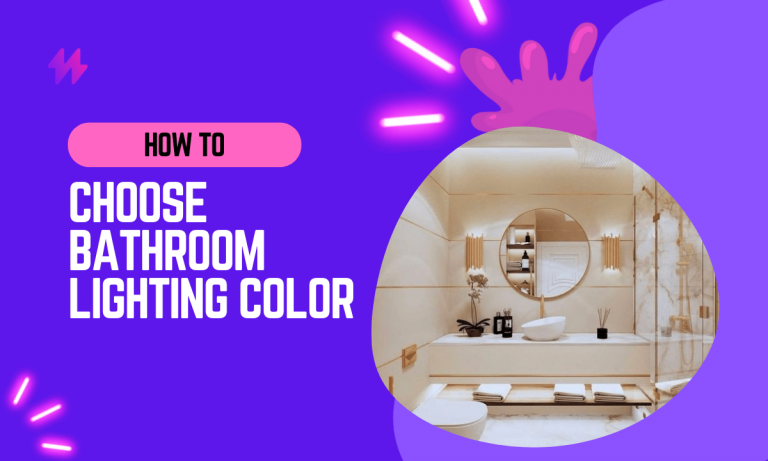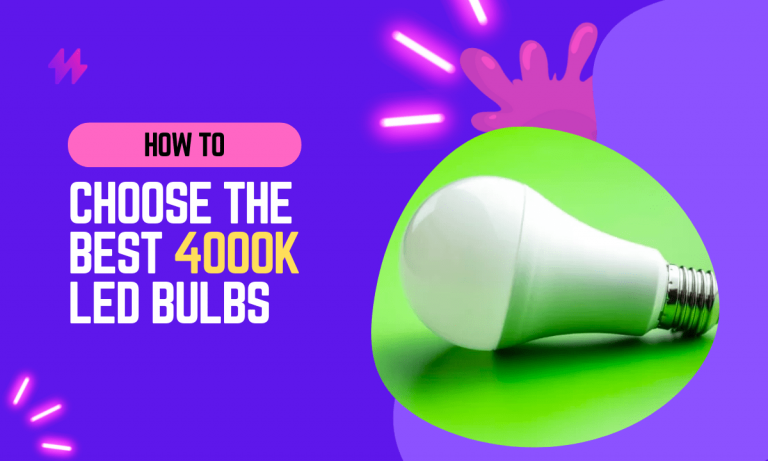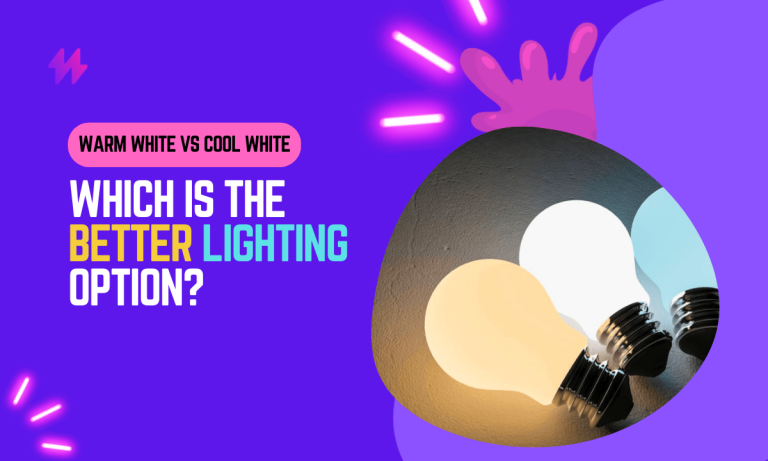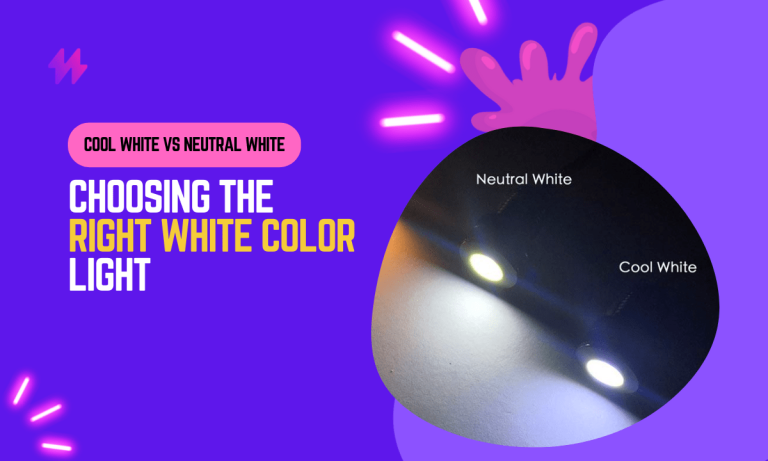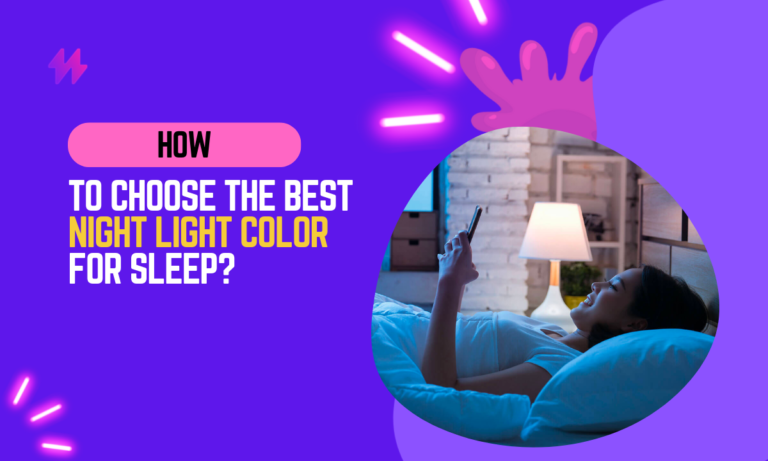How to Use LED Light Colors to Create Different Moods?
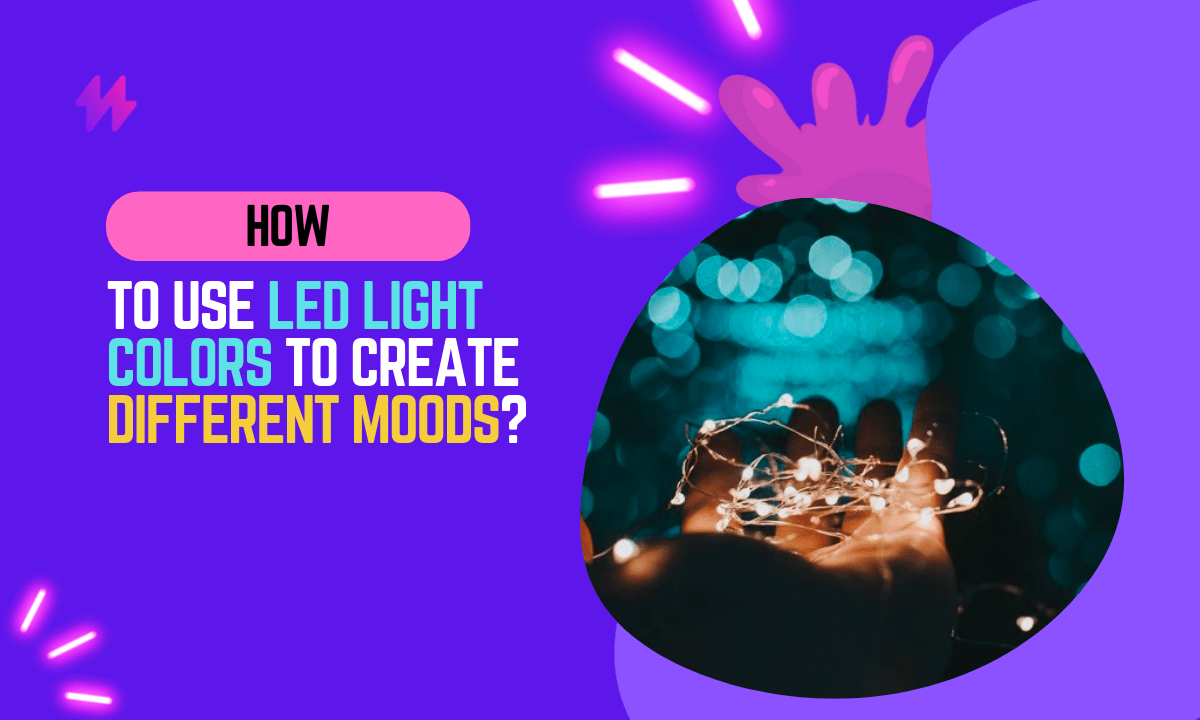
Have you ever wondered how to use LED lights to create different moods in your home? LED lights are a great way to add ambiance and personality to any space, and the color of the light can have a significant impact on our mood and emotions.
I have a deep understanding of LED lights work and how they can be used to create different moods. I am passionate about helping people use LED lights to improve their lives, and I am excited to share my knowledge with you in this blog post.
Using LED lights effectively can transform the atmosphere of any room, tapping into the principles of color psychology to enhance comfort and positivity. By selecting the right shades of blue or warm colors, you can tailor your lighting choices to encourage particular moods or energize your space, such as with dynamic lighting options like RGB LED lights.
How to Use LED Light Colors to Create Different Moods
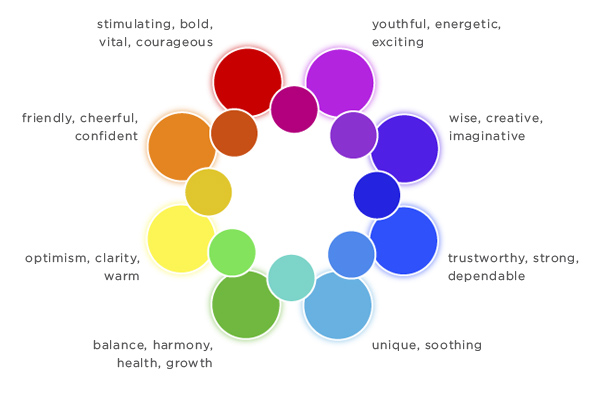
In this blog post, I will show you how to use LED light colors to create different moods in your home. I will provide you with tips on choosing the right colors of LED lights, and I will show you how to use LED lights to create a relaxing atmosphere, a romantic atmosphere, or a productive atmosphere.
I am confident that by the end of this blog post, you will have a better understanding of how LED lights can be used to improve your life.
The color of light can have a significant impact on our mood and well-being. Certain colors can make us feel more energized, while others can promote relaxation. By choosing the right LED light colors for your home, you can create a more comfortable and productive environment.
We will discuss the different colors of LED light and how they can affect our mood. We will also provide some tips on how to use LED lights to create the desired atmosphere in your home.
In this blog post, I will show you how to use LED light colors to create different moods in your home. I will provide you with tips on choosing the right colors of LED lights, and I will show you how to use LED lights to create a relaxing atmosphere, a romantic atmosphere, or a productive atmosphere. I am confident that by the end of this blog post, you will have a better understanding of how LED lights can be used to improve your life. The color of light can have a significant impact on our mood and well-being. Certain colors can make us feel more energized, while others can promote relaxation. By choosing the right LED light colors for your home, you can create a more comfortable and productive environment. We will discuss the different colors of LED light and how they can affect our mood. We will also provide some tips on how to use LED lights to create the desired atmosphere in your home. To maximize the benefits of mood lighting, consider experimenting with different color combinations until you find your ideal color that evokes your preferred mood. Incorporating smart lighting options, like color-changing bulbs, can further enhance the versatility of your lighting control and tailor your illumination based on the time of day or your current mood.
Understanding the Effects of LED Light Colors on Mood
The color of light has been shown to have a significant impact on our mood and behavior. Studies have shown that certain colors can:
- Increase alertness and energy: Blue light has been shown to increase alertness and energy levels. This is why it is often used in office lighting.
- Promote relaxation: Green light has been shown to promote relaxation and reduce stress. This is why it is often used in spas and meditation centers.
- Create a sense of calm: Blue-green light has been shown to create a sense of calm and relaxation. This is why it is often used in bedrooms and yoga studios.
- Encourage creativity: Red light has been shown to encourage creativity and productivity. This is why it is often used in art studios and classrooms.
Also read: What Color LED Lights Help you Sleep?
The color of light has been shown to have a significant impact on our mood and behavior. Studies have shown that certain colors can affect our emotional state, making the understanding of mood lighting essential for creating comfortable and productive spaces. By utilizing LED light bulbs and their various colors, you can easily adapt your environment to encourage creativity or relaxation. Whether you are looking to transform your space with colored lighting or implement smart lighting systems for dynamic color changes, choosing the right hues is vital in achieving your desired atmosphere.
Selecting Ideal LED Light Colors: A Guide to Enhance Your Mood
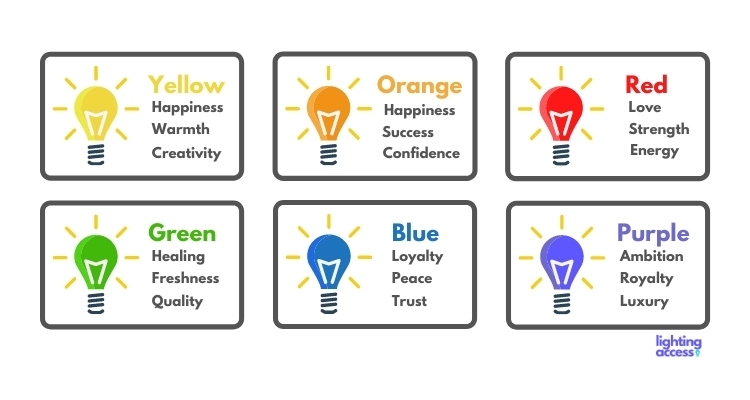
When choosing LED light colors for your home, it is important to consider the desired effect you want to create. If you want to create a more energetic and productive atmosphere, you might choose to use blue light. If you want to create a more relaxing and calming atmosphere, you might choose to use green or blue-green light.
Here are some tips for choosing the right LED light colors for your mood:
- Time of day: Blue light is best used during the day, as it can help to improve alertness and productivity. Green light is best used in the evening, as it can help to promote relaxation.
- Activity You Are Doing: Blue light is best used for activities that require focus and concentration, such as working or studying. Green light is best used for activities that promote relaxation, such as reading or meditating.
- Personal preferences: Some people find that certain colors are more calming or energizing than others. Experiment with different colors until you find the ones that work best for you.
You may also like: What Is the Best LED Light Color for Gaming?
When choosing LED light colors for your home, it is important to consider the desired effect you want to create. If you want to create a more energetic and productive atmosphere, you might choose to use blue light. If you want to create a more relaxing and calming atmosphere, you might choose to use green or blue-green light. Here are some tips for choosing the right LED light colors for your mood: You may also like: What Is the Best LED Light Color for Gaming? Incorporating versatile color options, such as LED strip lights, can enhance your spaces and provide various moods for any occasion. Additionally, utilizing color therapy techniques with specific colors can help promote a peaceful environment and improve your overall well-being.
Mastering LED Light Colors: How to Use Them to Create the Perfect Mood
LED lights are a versatile way to create the perfect mood in your home. You can use them to:
- Highlight certain features of your home. Use bright, warm colors to highlight architectural details or artwork.
- Create a warm and inviting atmosphere. Use dimmer lights and warm colors to create a cozy and relaxing atmosphere.
- Set the mood for a party or event. Use bright, cool colors to create a lively and energetic atmosphere.
Here are some tips for using LED lights to create the perfect mood:
- Use a variety of colors: Don’t just stick to one color. Using a variety of colors can help to create a more interesting and dynamic atmosphere.
- Layer your lights: Use different types of lights to create different effects. For example, you could use recessed lights for general lighting, track lights to highlight specific areas, and accent lights to create a warm and inviting atmosphere.
- Dim your lights: Dimming your lights can help to create a more intimate and relaxed atmosphere.
Here are some additional tips for using LED light colors to create different moods:
- LED light strips are a great way to add accent lighting to your home. You can use them to highlight architectural details, create a warm and inviting atmosphere, or set the mood for a party or event.
- LED candles are a great way to create a warm and inviting atmosphere without the mess and danger of real candles. They are also a great way to add a touch of romance to your home.
- LED fixtures are a great way to add a modern and stylish look to your home. They come in a variety of styles and colors, so you can find the perfect ones to match your décor.
Also read: How To Check Color Temperature Of LED Light?
LED lights offer a unique way to personalize your space and set the perfect mood. By utilizing LED strip lights and adjusting the brightness and color spectrum, you can seamlessly transition between different atmospheres, whether you’re aiming for calming moods or energetic vibes. Experimenting with various colors and dynamic colors can enhance your home’s ambiance and meet your preferred color preferences.
FAQs: Understanding LED Light Colors and Their Effects on Mood
Below you’ll find the top most frequently asked questions about using LED light colors to create different moods in your home.
Below you’ll find the top most frequently asked questions about using LED light colors to create different moods in your home. Understanding how different light colors such as blue-based colors and energizing colors can influence mood offers a foundation for achieving the perfect mood lighting tailored to your preferences. Additionally, the use of smart lighting colors and color therapy techniques can enhance your environment, helping create a more personalized lighting arrangement that promotes comfort and well-being.
Exploring Different LED Light Colors: What Are the Options?
LED lights come in a variety of colors, including red, green, blue, yellow, orange, and white. Each color has its own unique properties and can create a different mood or atmosphere.
LED lights come in a variety of colors, including red, green, blue, yellow, orange, and white. Each color has its own unique properties and can create a different mood or atmosphere. By selecting the right lighting control, you can tailor the atmosphere to meet your lighting preferences and enhance the overall ambiance of your space. Utilizing color therapy in combination with specific colors can create healing environments that promote comfortable moods and well-being.
Influence of LED Light Colors on Mood: Understanding Their Effects
The color of light can have a significant impact on our mood and behavior. For example, red light is often associated with excitement and energy, while blue light is associated with calmness and relaxation.
Lighting plays a critical role in shaping our emotions and behaviors, and different colors can significantly influence our daily experiences. By utilizing color therapy with specific hues, you can create healing environments and achieve your desired mood with LED mood lights that adapt to various settings.
Optimal LED Light Colors for Various Activities: Creating the Ideal Mood
The best color of LED light for a particular activity depends on the desired mood or atmosphere. For example, red light is a good choice for activities that require focus and energy, while blue light is a good choice for activities that require relaxation and rest.
The choice of LED light colors can significantly impact the creation of various moods in your surroundings. By understanding the effects of different color wavelengths, such as cool color lights and warm tone lights, you can achieve a perfect lighting system tailored to your specific mood goals. Additionally, incorporating accent lighting with unique colors like purple lighting and orange lighting can enhance the ambiance and prompt moods that foster creativity or relaxation. Exploring multiple colors and their combinations allows for a customizable environment that caters to your individual lighting preferences.
How to Use LED Lights to Create the Ideal Mood or Atmosphere
You can use LED lights to create a specific mood or atmosphere by choosing the right color of light. For example, if you want to create a relaxing atmosphere, you could use blue light. If you want to create an energetic atmosphere, you could use red light.
LED lights serve as a mood-setter in various environments when you utilize different color lighting strategically. By applying color therapy principles, you can create vibrant spaces that reflect your desired color and enhance your well-being, whether through the use of warm lighting or healing colors like light blues and violet colors.
Advantages of Using LED Lights for Enhanced Well-Being and Mood
LED lights offer a number of benefits over traditional incandescent and fluorescent lights, including:
LED lights, offering diverse color options, enhance illumination possibilities in homes and offices alike. By experimenting with various moods and color combinations, you can create a personalized environment that reflects your preferences and meets your lighting requirements effectively.
- Energy efficiency: LED lights use less energy than traditional lights, which can save you money on your energy bills.
- Longer lifespan: LED lights last longer than traditional lights, which means you won’t have to replace them as often.
- Better color quality: LED lights produce a more natural light that is easier on the eyes.
Conclusion: Harnessing LED Light Colors for Optimal Mood Enhancement
In conclusion, utilizing LED light colors effectively can profoundly impact the ambiance of any space, influencing mood and behavior with just the switch of a light. The psychological effects of color are well-documented, with colors like blue promoting calmness and relaxation, while red can energize and stimulate. By incorporating these principles into the use of LED lighting, one can craft environments tailored to specific activities or desired atmospheres. For instance, installing blue LED lights in a bedroom or bathroom can create a serene retreat, whereas warmer yellow or red tones in a dining room or living area can foster a welcoming and social environment. This strategic deployment of color-enhanced LED lighting not only beautifies a space but also enhances its functionality, aligning the setting with its intended use.
Moreover, the advent of smart LED technology has further expanded the possibilities for customizing lighting schemes. These advancements allow for the adjustment of light colors and intensity through simple apps, making it easy to transition the mood of a room with the time of day or the nature of the activities taking place. Whether calming a hectic kitchen in the evening with soft hues of lavender or invigorating a home office with crisp, bright white light during the day, smart LEDs offer unprecedented control over the lighting environment. Additionally, experimenting with color combinations and placements can yield unique effects, such as using contrasting colors for dramatic flair or harmonious shades for a subtle and cohesive look. Ultimately, understanding and implementing LED light colors not only enhances aesthetic appeal but also supports well-being and productivity, making it a smart choice for thoughtful homeowners and designers alike.
How To Use LED Light Colors To Create Different Moods | Understanding LED Light Color Psychology
Understanding how to use LED light colors to create different moods relies heavily on the science behind color perception and its emotional impacts. Primary colors set the foundation for various emotional responses, where cool color lights, such as blue and green, often induce a calm mood, while warmer hues like yellow and orange energize the environment. Utilizing incandescent light bulbs or LED color variants, such as color-changing light bulbs or starlights, allows for dynamic lighting adjustments that can shift the atmosphere. By incorporating light therapy principles, decorative illumination, and color-changing lights into spaces, one can manipulate light settings to achieve desired emotional states. The interplay of multiple colors and light wavelengths, from vivid blue tones to softer light pink hues, provides a unique color display that aligns with one’s current mood, creating spaces that are conducive to relaxation or motivation. Whether employing recessed lights, lamps, or mood strips, mastering the subtleties of color tones and brightness levels enhances the ability to prompt specific moods and achieve that perfect lighting system for any occasion.
How to Use LED Light Colors to Create Different Moods | The Science Behind Color Perception
Color perception plays a significant role in how we utilize LED lights to create different moods. The light spectrum affects our emotional states, prompting both subtle and marked changes in ambiance. For instance, red LED lights can foster energetic moods, while blue lighting often promotes calm and relaxed atmospheres. Different color combinations, such as warmer tones with yellow light colors, can evoke feelings of happiness and warmth, making them ideal for social gatherings. Understanding these principles aids in achieving mood goals through customized color displays, whether using static colors or dynamic color-changing bulbs.
Using various lighting intensities also contributes to mood creation. Bright lights can energize a space, while dimmed options may create a cozy and inviting environment. Color strip lights and decorative lights allow for versatility in how spaces are illuminated, encouraging creativity in designing light systems. The psychological effects of colors mean that choosing cooler hues like blue and green can be conducive to focused work, while brighter, funkier colors like orange and purple may prompt a pep-you-up atmosphere. Choosing the right colors according to personal preferences ensures a colorful glow wherever you need it, enhancing both daily living and special occasions.
How Colors Influence Emotional States
Colors exert a significant influence on emotional states, affecting how individuals respond to their environment. For instance, blue colors often evoke feelings of calmness and tranquility, making them ideal for creating a relaxed mood in spaces like bedrooms. Conversely, vivid color shades like yellow or orange lighting can prompt a sense of energy and positivity, serving as a pep-you-up color for social areas. Understanding color connotations helps in selecting the perfect color schemes, whether it’s through multi-color displays or warm glow lighting that mimics natural light. How to Use LED Light Colors to Create Different Moods involves recognizing how specific colors and their intensity can lead to either positive or negative moods.
Creating different emotional atmospheres can be easily achieved with the right lighting choices. Cool lights, such as purple or blue hues, are marked mood-setters for a laid-back environment, while warm tone lights can provide a cozy feel ideal for gatherings. Accent lighting can produce short mood boosts in low-light settings, effectively shifting the overall ambiance. Using smart light bulbs allows for customization of brightness combinations and color intensity, offering available color options to fit any occasion. By layering different shades and utilizing light boxes, individuals can establish a dynamic space that supports both relaxation and energy as needed.
Practical Applications of LED Light Colors
Creating different moods in a space can be easily achieved through the strategic application of LED light colors. Understanding how to use LED light colors to create different moods involves recognizing the psychological impact that various colors have on emotional states. For a calm and serene environment, cool tones such as blue or darker green provide a conducive light that mimics natural lighting, similar to daylight or the northern lights. These colors can prompt subtle moods and promote relaxation, making them ideal for spaces designated for unwinding. Conversely, warm shades like yellow-white or orange lighting can energize a room, instantly providing a major mood boost while enhancing social interactions. Experimenting with different lights—be it vibrant purple lighting for a funky mood or calming green colors—allows individuals to tailor their ambiance using versatile color options. Integrating monochromatic schemes or layering colors can also be beneficial, enabling one to shift from white color lights mimicking regular incandescent light to colored lights that adjust throughout the day, reflecting the natural rhythm of sunlight. By understanding light connotations and the way particular colors influence moods, creating the perfect atmosphere is within reach.
Creating Calm Spaces with Cool Tones
Using cool tones such as blue and green lighting can create a calm environment, perfect for relaxation and unwinding. These conducive light colors are ideal for spaces designed for rest and rejuvenation. White light color with soft hues serves to enhance the tranquil atmosphere, while dimmed lights can elevate the calming effect. Many people benefit from integrating these powerful colors into their homes, as common moods associated with cool lighting often include serenity and peace. Individuals seeking to prompt moods conducive to relaxation might consider using colorful lights that feature varying shades within the blue and green spectrum.
Incorporating neutral colors like white LEDs alongside cool tones can further enhance the desired relaxing environment. The combination of warm lights, such as yellow-white warm lighting, with cool tones can balance the overall ambiance without detracting from the calming effect. Different color options, including single-color displays, allow for personalization while maintaining the same relaxing mood. For those exploring how to use LED light colors to create different moods, understanding the impact of basic colors on emotional states is essential. Color therapy arenas often highlight the significance of creating spaces that offer a perfect blend of colors to achieve a cool mood, making it easier to unwind and recharge.
Energizing Your Environment with Warm Shades
Warm shades, such as yellow colors and soft oranges, are perfect for creating an invigorating atmosphere. These shades can effectively simulate the effects of natural daytime lighting, making spaces feel more lively and inviting. Regular light bulbs can sometimes feel too harsh, while the ideal color of warm LED lights elevates the mood without overwhelming the senses. Understanding how to use LED light colors to create different moods allows individuals to tailor their environments based on the desired energy and ambiance.
The versatility of LED lights enables individuals to change colors easily, providing a dynamic light display that can shift throughout the day. Incorporating warm tones can enhance focus and productivity in workspaces or inspire creativity in artistic environments. Selecting the right individual color can make a substantial difference in how a room feels. By utilizing hidden light techniques with warm shades, homeowners can balance aesthetics and functionality, ensuring each area resonates with positive energy.
Designing Your Space with LED Lighting
Creating a well-designed space with LED lighting involves understanding how to use LED light colors to create different moods. Many colors are available through adjustable LEDs, allowing for tailored lighting solutions that can significantly impact the atmosphere of a room. White lighting can provide a clean, modern feel, while warmer tones can make a space feel cozy and inviting. Experimenting with various shades can help to enhance emotional well-being and productivity. Overall, knowing how to use LED light colors to create different moods is essential for effective interior design, making your environment more enjoyable and functional.
Tips for Layering Light Colors
Layering LED light colors is an effective strategy for creating different moods in any space. Start by mixing various shades to achieve desired emotional effects. For instance, combining soft blues and greens can foster a tranquil atmosphere, perfect for relaxation or meditation. On the other hand, blending warm hues like oranges and yellows can induce a more inviting and cheerful environment, making it an excellent choice for social gatherings.
Be mindful of the intensity and placement of your LED lights when layering colors. Ambient lighting can serve as the base layer with a soft hue, while accent lights in bolder shades can draw attention to specific areas or decor items. This approach not only enhances the aesthetic appeal of your space but also perfectly demonstrates how to use LED light colors to create different moods throughout the day and night.
Integrating LED Lights into Your Home Decor
Using LED lights as part of your home decor allows for flexibility in creating different moods throughout your living space. Understanding how to use LED light colors to create different moods can transform a room from a serene oasis to an energetic hub. Emphasizing particular colors in strategic areas, like a soothing blue in the bedroom or a vibrant orange in the kitchen, enhances the ambiance and helps set the desired emotional tone.
Incorporating LED lights into your home decor also provides an opportunity to showcase your personal style. Customizing your lighting design with color adjustments gives you the power to play with mood settings depending on the occasion. Learning how to use LED light colors to create different moods offers endless possibilities for expressing both comfort and creativity throughout your home.

